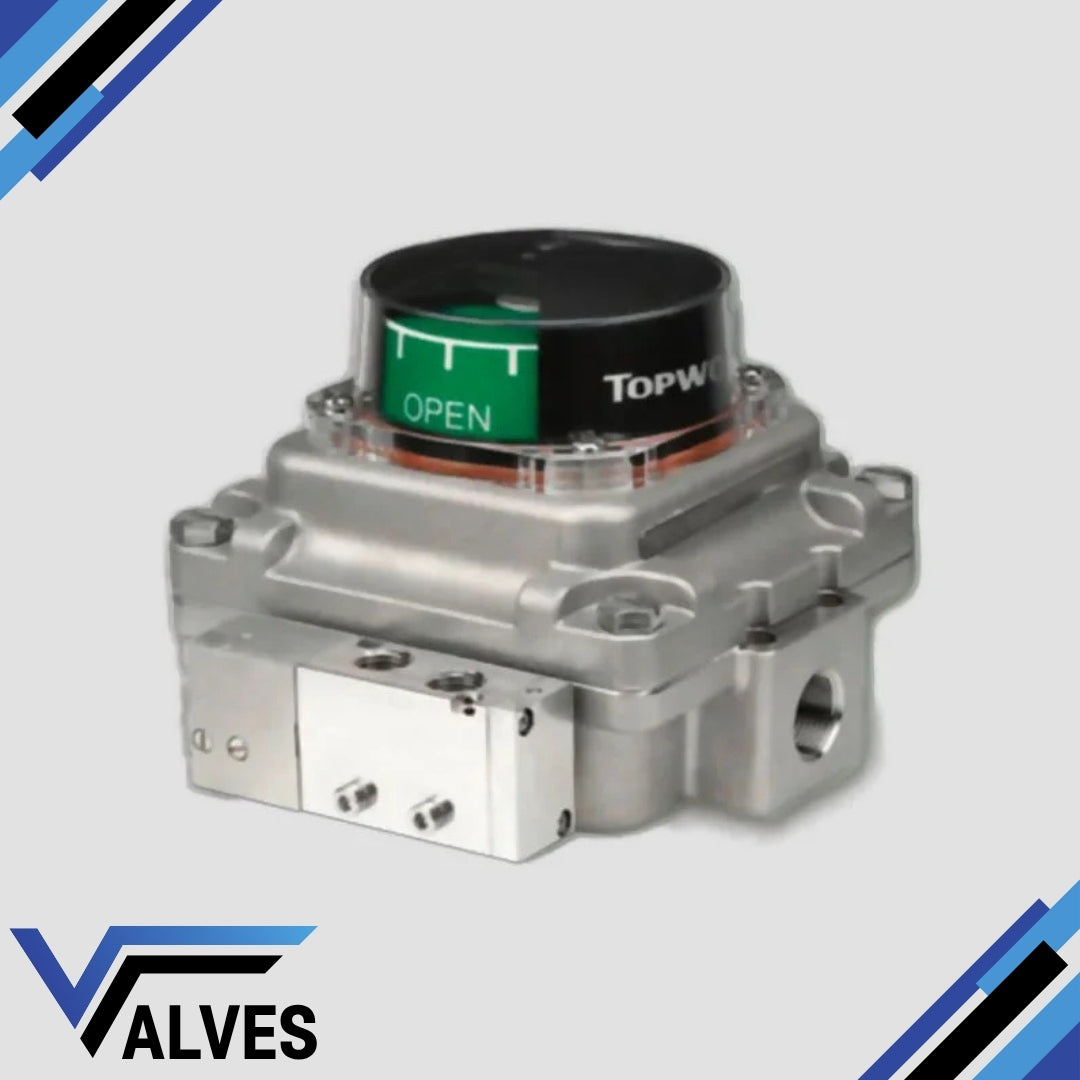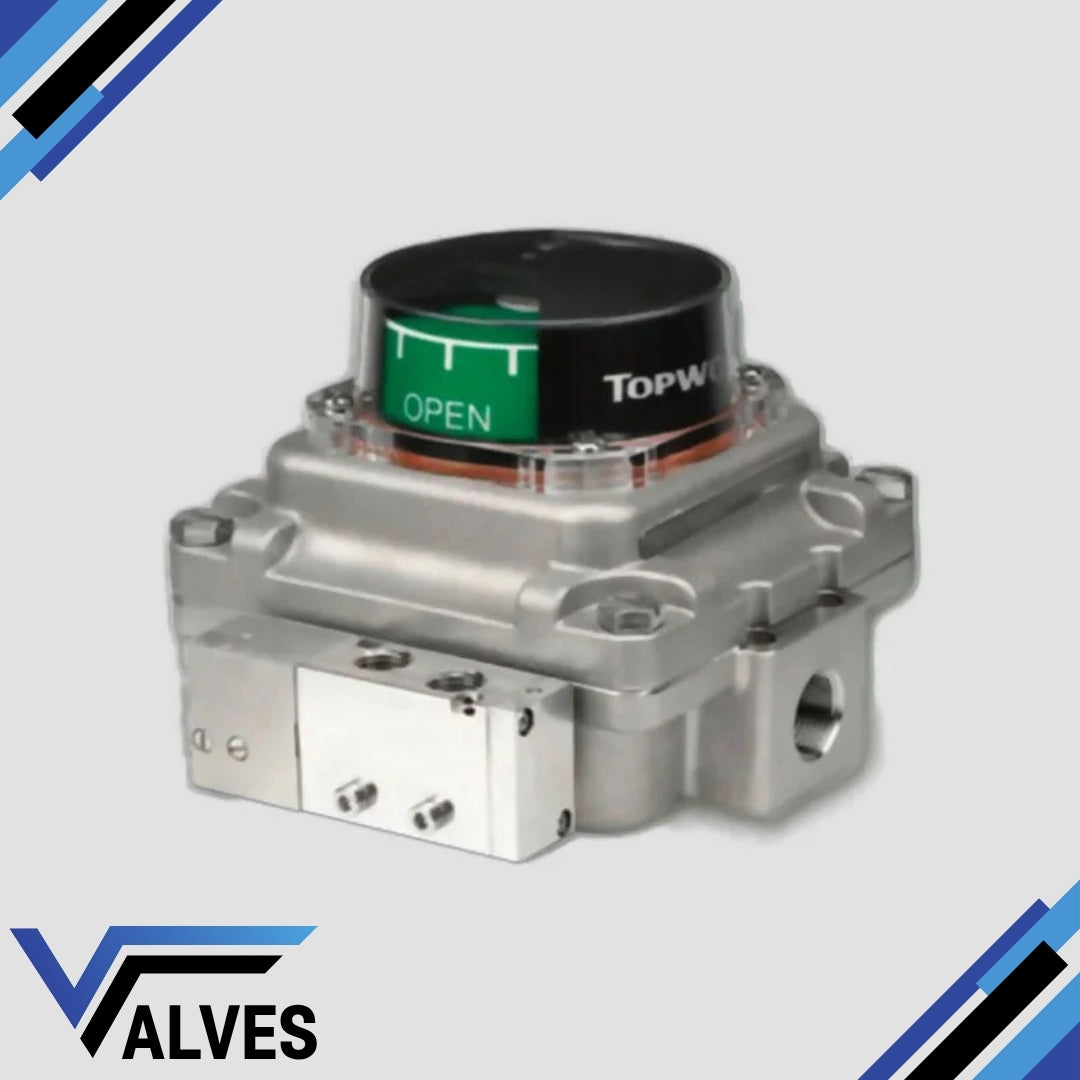Topworx Switchboxes
TopWorx Limit Switch Box TXS-D21GLPM Valve Monitor
TopWorx Limit Switch Box TXS-D21GLPM Valve Monitor
Couldn't load pickup availability
This valve monitor is compact and easy to integrate into automated systems. It offers dependable feedback for valve position and comes equipped with GO™ switches, which are highly resistant to environmental challenges. Its design ensures reliable operation in hazardous environments, with certifications for use in globally recogniSed explosion-proof zones.
Key Features:
- GO™ Switch Technology: Hermetically sealed SPDT switches, offering no power consumption and zero voltage drop.
- Wide Operating Temperature: The TXS-D21GLPM can operate between -40°C to 85°C, ensuring it performs in extreme temperature conditions.
- Compact and Durable Design: Built with corrosion-resistant materials to handle harsh industrial settings.
- Global Certifications: Approved for use in hazardous locations with explosion-proof certifications in North America, Europe, and Asia.
- CustomiSable Configurations: Can be equipped with different switch options to meet specific operational needs.
Additional Information:
The TopWorx TXS-D21GLPM also features easy-to-adjust cams for accurate valve position indication, allowing precise setting of the open and closed positions without the need for additional tools. Its durable housing protects the internal components from dust, water, and other environmental hazards, extending the product's lifecycle. This makes it an ideal choice for automated valve monitoring in challenging industrial applications.
For more information, you can explore the official Emerson website or the product's data sheets for in-depth specifications and configuration options.
Share

FAQ's
What is the difference between a valve and an actuator?
What types of actuators are available?
The main types of actuators are:
Pneumatic actuators – use compressed air for fast, reliable operation.
Electric actuators – use electrical power for precise control.
Hydraulic actuators – use fluid pressure for high-torque applications.
Each type offers unique advantages depending on the environment, media, and system control needs.
How do I choose the right actuator for my valve?
To select the correct actuator, consider:
Valve type and torque requirement
Power source available (air, electric, or hydraulic)
Operating environment (temperature, humidity, hazardous area)
Control signal type (on/off or modulating)
Matching actuator torque and compatibility with the valve’s ISO mounting ensures reliable performance.
What are the main types of valves used in automation?
The most common valves in automated systems include:
Ball valves – for tight shutoff and quick operation.
Butterfly valves – for larger flow control with compact design.
Globe valves – for precise throttling and flow regulation.
Check valves – to prevent backflow.
Gate valves – for full bore flow isolation.
What’s the difference between a double-acting and spring-return actuator?
Double-acting actuators use air (or power) to both open and close the valve.
Spring-return actuators use air to open (or close) the valve, and a built-in spring to automatically return it to a safe position when power or air is lost — ideal for fail-safe operation.
How often should valves and actuators be serviced?
Regular maintenance intervals depend on operating conditions, but a good rule of thumb is to inspect every 6–12 months.
This includes checking for leaks, lubrication, seal wear, and actuator responsiveness to prevent unexpected downtime.

